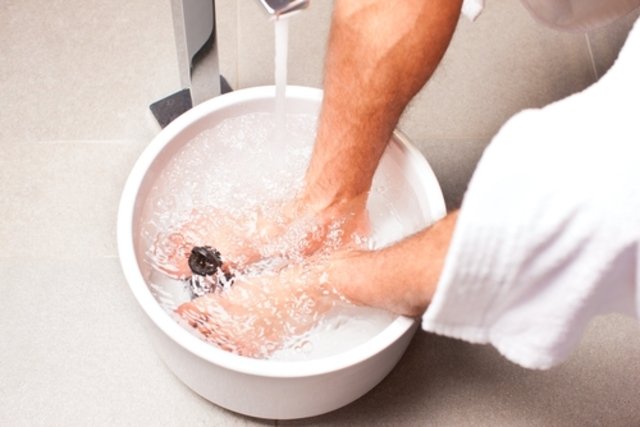Treatment for nail fungus can be done with medicines such as Fluconazole, Itraconazole or Terbinafine or with the use of lotions, creams or nail polishes such as loceryl, Micolamine or Fungirox, with laser or even with the help of home remedies.
Before carrying out the treatment, you must go to the dermatologist, who will indicate which treatment is most appropriate and whether it should be carried out with medicines or nail polish purchased at the pharmacy or with both.
The treatment for mycosis of the nail with lotions, creams or enamels must be maintained for 6 months, in the case of mycosis of the nail of the hand, and for 9 to 12 months, in the case of mycosis of the nail of the foot, because of the growth time of the nail one

1. Pharmacy remedies
Generally, the remedies used to treat nail fungus are varnishes and solutions suitable for application in this region, such as Andriodermol, Loceryl, Onicoryl or Lakesia, for example.
In more serious cases or in which treatment with topical remedies is not sufficient, it may be necessary to resort to oral medications, such as terbinafine or itraconazole, for example. See other remedies used for skin and nail mycosis.
2. Laser Therapy
The laser treatment for nail mycosis, called photodynamic therapy, uses methylene blue dye, which, after being heated by the red therapeutic laser, is capable of eliminating the mycosis fungus and promoting nail growth.
Photodynamic therapy sessions generally occur once a week, but there are cases where it may be necessary to carry out up to 2 or 3 sessions per week and the treatment time varies between 1 and 3 months.
Another option is treatment for nail fungus with LED, which works in the same way as the laser, as the light emitted by the LED also reacts with the dye, facilitating the elimination of the fungus.
3. Homemade options
A great home treatment for nail fungus is copaiba oil, because this medicinal plant has antifungal, anti-inflammatory, emollient and healing properties.
To carry out this natural treatment, simply go to a compounding pharmacy and ask them to prepare a cream or lotion with copaiba oil and apply it to the affected nail, at least 3 times a day.
Another treatment option for nail fungus is with hydrogen peroxide, as it has antiseptic properties. To do this, simply soak your feet in a basin with 3% hydrogen peroxide and water, in the same proportions, for 30 minutes a day, for a few months, until you get results. Discover more home remedies for nail fungus.
Tips for effective treatment
Some tips that can help in the treatment of nail fungus are:
- Avoid biting your nails;
- Wash and dry your nails well after bathing;
- Preferably wear open shoes that are not tight;
- Wear cotton socks;
- Avoid sharing nail files and manicure or pedicure objects;
- Disinfect manicure or pedicure objects with alcohol before using them;
- Take your own nail supplies such as pliers, files, nail polish or toothpicks when you go for a manicure or pedicure in a beauty salon.
If the individual with nail fungus has a profession in which they have to use their hands, such as a beautician, massage therapist or manicurist, for example, they must be careful to use sterile gloves to avoid contaminating the client.
Signs of improvement
The signs of improvement in nail fungus depend on the type of treatment chosen, therefore, a regular visit to the dermatologist is essential to check the signs of improvement, which include the disappearance of the yellowish or white color of the nail and healthy growth of the nail.
Signs of worsening
Signs of worsening nail mycosis appear when treatment is not carried out, is not adequate or is carried out incorrectly and include deformity of the nail and transmission of the infection to other nails.
Possible complications
Nail mycosis, when left untreated, can lead to complications such as paronychia, which is a bacterial infection in the region around the nail. In diabetics or individuals with a compromised immune system, the risk of infection is greater. Find out how to treat paronychia.

Sign up for our newsletter and stay up to date with exclusive news
that can transform your routine!
Warning: Undefined array key "title" in /home/storelat/public_html/wp-content/plugins/link-whisper-premium/templates/frontend/related-posts.php on line 12
Warning: Undefined array key "title_tag" in /home/storelat/public_html/wp-content/plugins/link-whisper-premium/templates/frontend/related-posts.php on line 13



